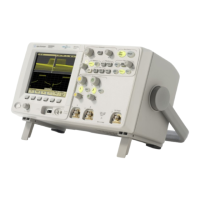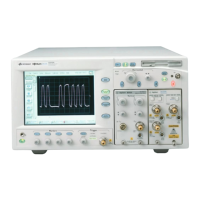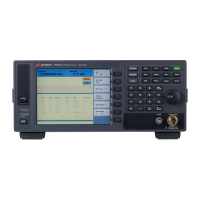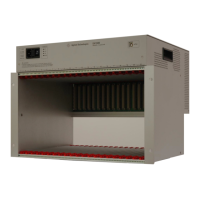Programming Examples 12
Agilent InfiniiVision 5000 Series Oscilloscopes Programmer's Guide 689
{
FILE *fp;
fp = fopen("c:\\scope\\data\\wave.dat", "wb");
/* Write preamble. */
fwrite(preamble, sizeof(preamble[0]), 10, fp);
/* Write actually waveform data. */
fwrite(waveform_data, sizeof(waveform_data[0]),
(int)preamble[2], fp);
fclose (fp);
}
/*
* retrieve_waveform
* ------------------------------------------------------------------
* This function retrieves previously saved waveform data from a
* file called "wave.dat".
*/
void retrieve_waveform(void)
{
FILE *fp;
fp = fopen("c:\\scope\\data\\wave.dat", "rb");
/* Read preamble. */
fread (preamble, sizeof(preamble[0]), 10, fp);
/* Read the waveform data. */
fread (waveform_data, sizeof(waveform_data[0]),
(int)preamble[2], fp);
fclose (fp);
}
SICL Example in Visual Basic
To run this example in Visual Basic for Applications:
1 Start the application that provides Visual Basic for Applications (for
example, Microsoft Excel).
2 Press ALT+F11 to launch the Visual Basic editor.
3 Add the sicl32.bas file to your project:
a Choose File>Import File....
b Navigate to the header file, sicl32.bas (installed with Agilent IO
Libraries Suite and found in the Program Files\Agilent\IO Libraries
Suite\include directory), select it, and click Open.
4 Choose Insert>Module.
5 Cut- and- paste the code that follows into the editor.
6 Edit the program to use the SICL address of your oscilloscope, and save
the changes.
7 Run the program.

